Complete Solutions to SET of chapter WAVE OPTICS of Class 12 book with complete answers and questions
| Class 12 | PHYSICS |
| Chapter | WAVE OPTICS |
| ERRORLESS | SET |
| Number Of Questions | 23 |
| Academic Year | 2023-24 |
Following figures shows sources `S_1` and `S_2` that emits light of wavelength `lambda` in all directions. The sources are exactly in phase and are separated by a distance equal to `1.5lambda`. If we start at the indicated start point and travel along path 1 and 2, the interference produce a maxima all along
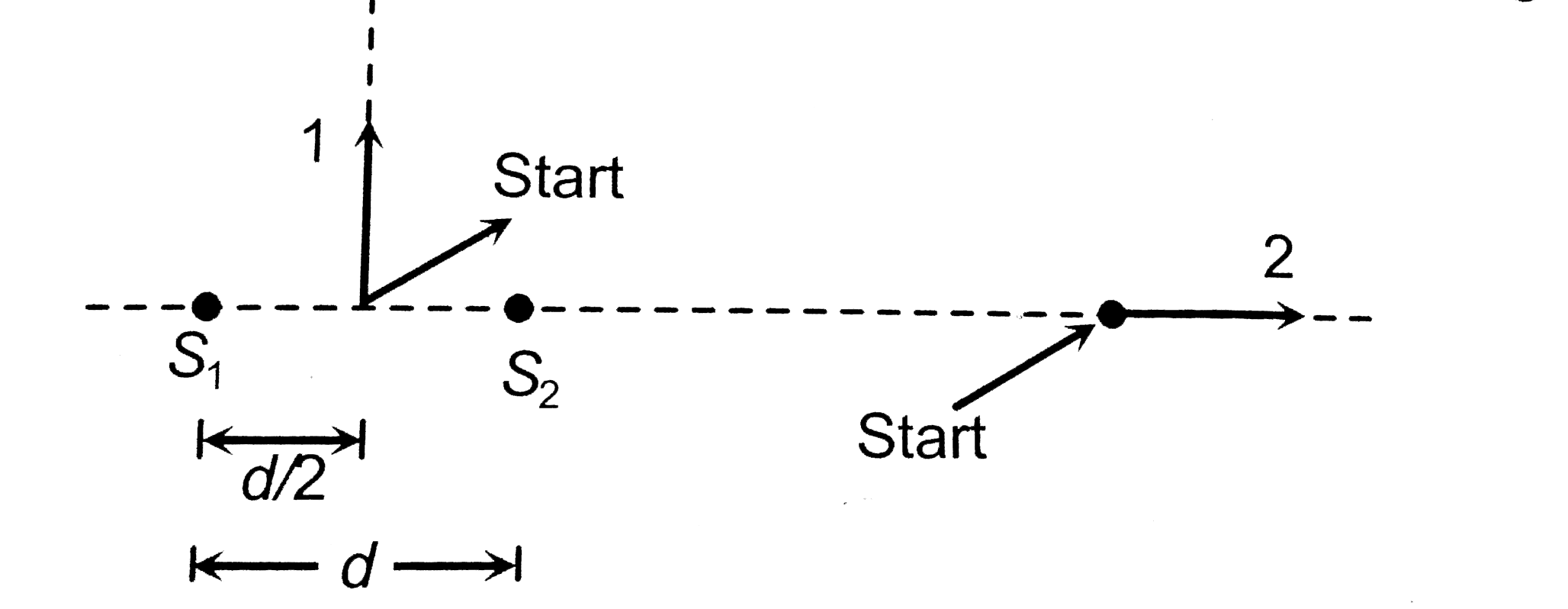 03:37View Solution
03:37View SolutionIn a Young's double slit experimental arrangement shown here, if a mica sheet of thickness t and refractive indec `mu` is placed in front of the slit `S_1`, then the path difference `(S_1P-S_2P)` is
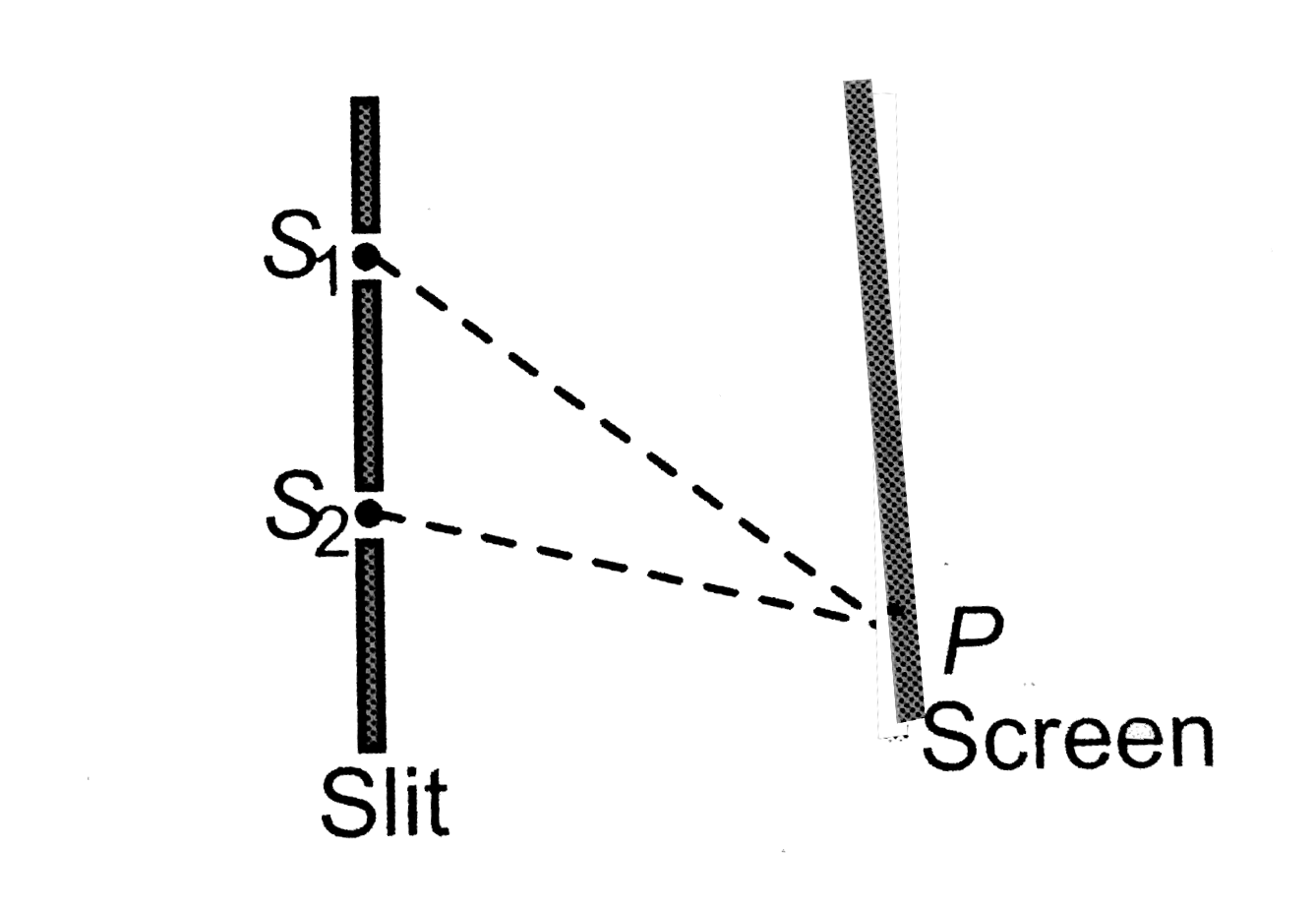 02:03View Solution
02:03View SolutionIn the set up shown in figure, the two slits `S_1` and `S_2` are not equidistant from the slit S. The central fringe at O is then
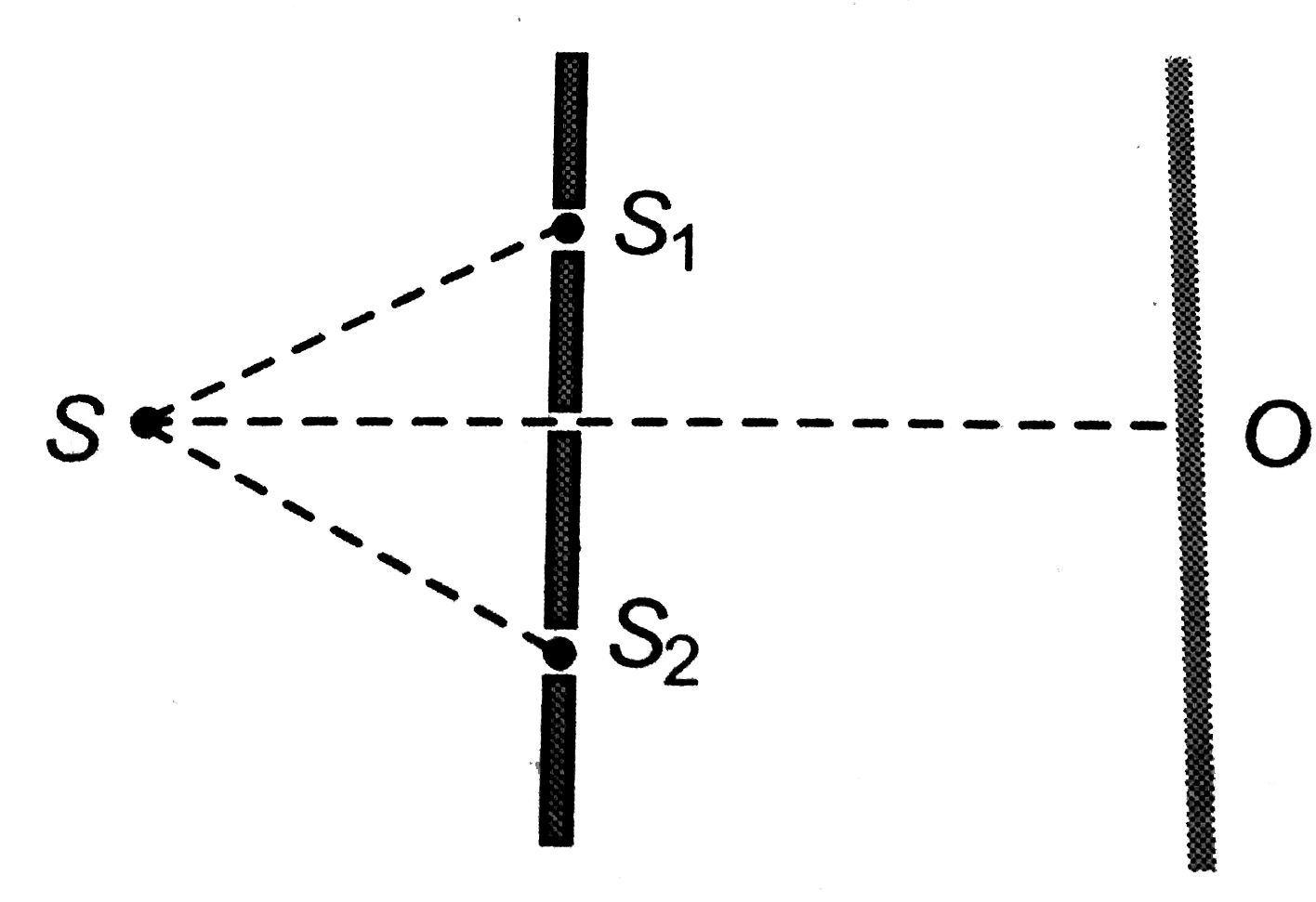 02:22View Solution
02:22View SolutionThe intensity ratio of two coherent sources of light is p. They are interfering in some region and produce interference patten. Then the fringe visibility is
03:56View SolutionThree waves of equal frequency having amplitudes `10mum`, `4mum`, `7mum` arrive at a given point with successive phase difference of `pi//2`, the amplitude of the resulting wave in `mum` is given by
03:13View SolutionFour different independent waves are represented by
(i) `y_(1) = a_(1) sin omega t` , (ii) `y_(2) = a_(2) sin 2 omega t`
(iii) `y_(3) = a_(3) cos omega t` , (iv) `y_(4) = a_(4) sin (omega t+(pi)/(3))`
With which two waves interference is possibleView SolutionA beam of light consisting of two wavelength `650nm` and `520nm` is used to illuminate the slit of a Young's double slit experiment. Then the order of the bright firnge of the longer wavelength that coincide with a bright fringe of the shorter wavelength at the least distance from the central maximum is
03:37View SolutionTwo identical radiators have a separation of `d=lambda//4` where `lambda` is the wavelength of the waves emitted by either source. The initial phase difference between the sources is `lambda//4`. Then the intensity on the screen at a distant point situated at an angle `theta=30^@` from the radiators is (here `I_0` is intensity at that point due to one radiator alone)
04:28View SolutionIn Young’s double slit experiment, the 8 th maximum with wavelength `lambda_(1)` is at a distance `d_(1)` from the central maximum and the 6 th maximum with a wavelength `lambda_(2)` is at a distance `d_(2)`. Then `(d_(1)//d_(2))` is equal to
View SolutionLight of wavelength `500nm` is used to form interference pattern in Young's double slit experiment. A uniform glass plate of refractive index `1.5` and thickness `0.1mm` is introduced in the path of one of the interfering beams. The number of fringes which will shift the cross wire due to this is
06:23View SolutionTwo coherent sources of equal intensity produce maximum intensity of `100` units at a point. If the intensity of one of the sources is reduced by 36% reducing its width, then the intensity of light at the same point will be
04:37View SolutionThe path difference between two interfering waves of equal intensities at a point on the screen is `lambda//4`. The ratio of intensity at this point and that at the central fringe will be
03:27View SolutionIn a Young's double slit experiment, `I_0` is the intensity at the central maximum and `beta` is the fringe width. The intensity at a point P distant x from the centre will be
06:01View SolutionIn a Fresnel’s diffraction arrangement, the screen is at a distance of 2 meter from a circular aperture. It is found that for light of wavelengths `lambda_(1)` and `lambda_(2)` the radius of 4 th zone for `lambda_(1)` coincides with the radius of 5th zone for `lambda_(2)`. Then the ratio `lambda_(1) : lambda_(2)` is
View SolutionIf n represents the order of a half period zone, the area of this zone is approximately proportional to `n^(m)` where m is equal to
View SolutionA screen is placed `50 cm` from a single slit, which is illuminated with `6000 Å` light. If the distance between the first and third minima in the diffraction pattern is `3.00 mm`, what is the width of the slit ?
01:55View SolutionIn Young's double slit experiment, the fringes are displaced index 1.5 is introduced in the path of one of the beams. When this plate in replaced by another plate of the same thickness, the shift of fringes is `(3//2)x`. The refractive index of the second plate is
02:56View SolutionTwo waves of equal amplitude and frequency interfere each other. The ratio of intensity when the two waves arrive in phase to that when they arrive `90^@` out of phase is
02:33View SolutionIn Young's double-slit experiment , we get 60 fringes in the field of view if we use light of wavelength `4000 Å`. The number of fringes we will get in the same field of view if we use light of wavelength `6000 Å` is
01:26View SolutionA parallel- plate capacitor with plate area A and separation between the plates d, is charged by a constant current i. Consider a plane surface of area A/2 parallel to the plates and drawn summetrically between the plates. Find the displacement current through this area.
04:28View SolutionThe figure here gives the electric field of an EM wave at a certain point and a certain. The wave is transporting energy in the negative z direction. What is the direction of the magnetic field of the wave at the point and instant?
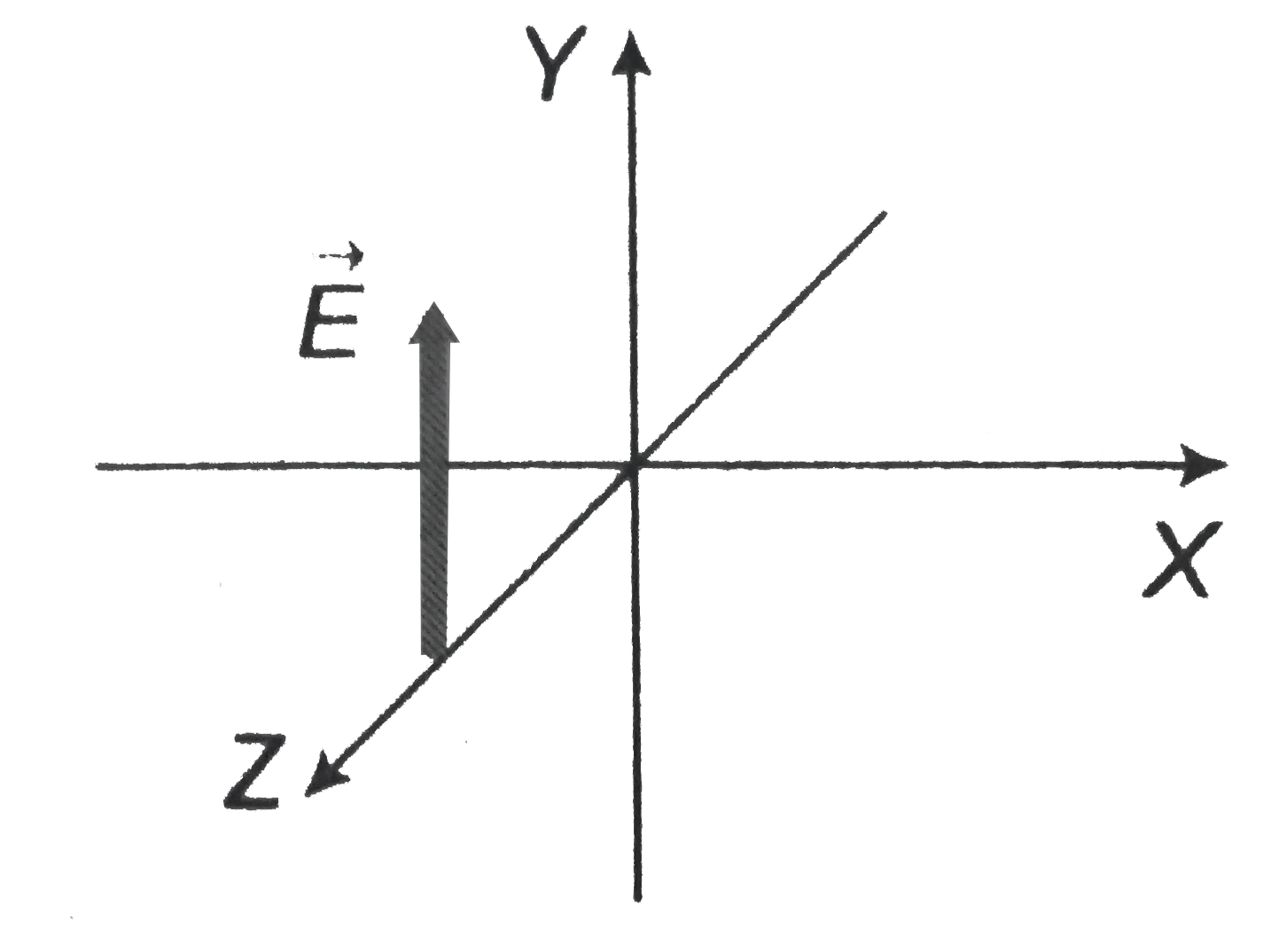 01:52View Solution
01:52View SolutionThe figure shows four pairs of polarizing sheets, seen face-on. Each pair is mounted in the path of initially unpolarized light. The polarizing direction of each sheet (indicated by the dashed line) is referenced to either a horizontal x -axis or a vertical y axis. Rank the pair according to the fraction of the initial intensity that they pass, greatest first
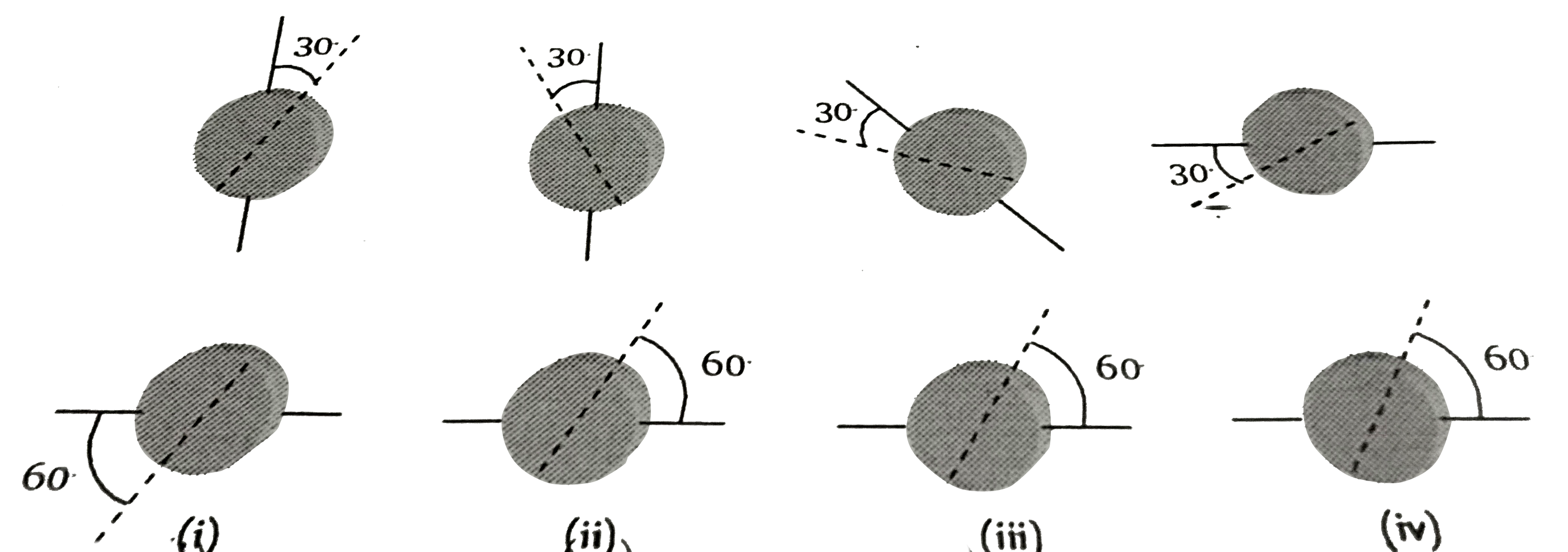 View Solution
View SolutionAn astronaut floating freely in space decides to use his flash light as a rocket. He shines a 10 watt light beam in a fixed direction so that he acquires momentum in the opposite direction. If his mass is 80 kg , how long must he need to reach a velocity of `1ms^(-1)`
View Solution
SET questions and complete solutions for chapter WAVE OPTICS of UNIVERSAL BOOK DEPOT 1960 PHYSICS (HINGLISH) of Class 12
